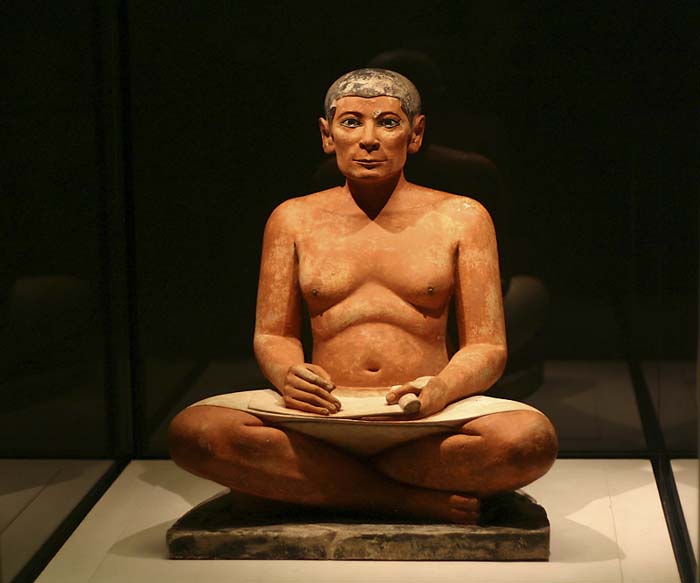

Egyptian scribe in hierogliphics how to#
Learn about how Egyptian writing works and what it all represents, plus find out how to spell your name in hieroglyphics – cool!Īlthough hieroglyphics are Egyptian, the word hieroglyphics is Greek.
Egyptian scribe in hierogliphics full#
The Sitemap provides full details of all of the information and facts provided about the fascinating subject of Egypt, the Ancient Egyptians and of the Pharaoh Tutankhamun, King Tut.Ancient Egyptian hieroglyphics were one of the hardest of Egypt’s mysteries to uncover! Check out our fascinating facts about hieroglyphics…

Thoth had an important role in the Underworld in the judgment of the dead in the Hall of the Two Truths where he was the scribe who recorded the confessions of the dead and also kept a record of the souls who progressed into afterlife.Įach section of this Egyptian website addresses all topics and provides interesting facts and information about the Golden Age of Egypt. The god Thoth was revered as the God of Wisdom and was also the scribe of the gods and the inventor of writing. Scribes - Thoth, the God of Wisdom and Scribe of the gods By the Late Period and even more fluent script was devised by scribes for compiling documents and lists which was called Demotic script.The hieratic version of writing was used to create various types of papyrus documents A simplified version of hieroglyphics was devised by scribes known as 'hieratic' writing which lost the pictorial aspect of hieroglyphs.Hieroglyphics were used by scribes for writing memorials on great monuments The original hieroglyphs represented sounds and there were over 700 hieroglyphs which could used in numerous combinations to give specific meanings. Hieroglyphics use a combination of logographic, syllabic, and alphabetic elements. Scribes used Hieroglyphics a system of picture writing which used symbols (hieroglyphs) instead of letters or words.The scribes sat Indian style holding his writing board in his lap. The scribes had to be conversant with different styles of writing which included Hieroglyphics, hieratic writing and in later years of the Egyptian periods the Demotic script. This list of subjects provides and indication of the breadth of knowledge which was acquired by the Ancient Egyptian scribes. Math - Using a decimal system based on ten fingers.Lessons taught by scribes included the following subjects: The most able scribes taught the future Pharaoh at the Prince's school. The Ancient Egyptian schools were run by scribes and therefore called the Scribe Schools. Whenever scribes started work they would sprinkle a drop from their water bowl in honor of Imhotep. One of the most famous scribes was called Imhotep became a vizier of Egypt and was eventually deified as as the Son of Ptah, the Lord of all Builders. Overseeing the construction of buildings including planning, surveying and supervisingĪdditional roles for scribes who advanced and were promoted included the roles of engineers, priests, judges, doctors and teachers.Controlling the food supply and distribution.Documenting rainfall and water levels of the Nile.Recording harvests, food supply and distribution.Writing letters and legal documents such as marriage contracts.

Scribes could be described as the civil servants of Egypt. The roles Ancient Egyptian scribe revolved around work relating to the government of Egypt. In Ancient Egypt it was traditional and common place for a father to teach his profession to his son, so many scribes were the sons of scribes. An Ancient Egyptian scribe was exempt from the daily toil of physical labor and was viewed with respect by society. An Ancient Egyptian scribe had the opportunity rise to high ranks and even become a royal scribe bringing him wealth, land and power. Anyone, whatever their background, could undertake this profession, if they had the right education and training. The Ancient Egyptian scribe was an extremely good career or job.


 0 kommentar(er)
0 kommentar(er)
